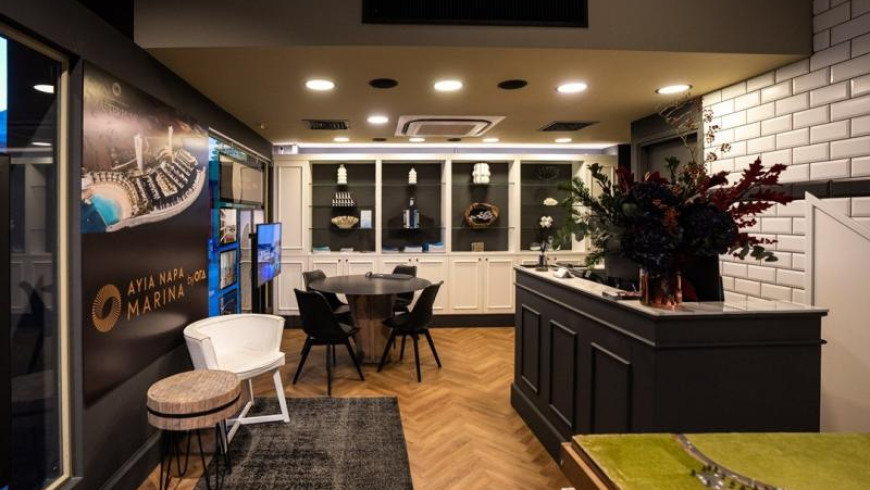
Increase in first quarter 2011 deal activity signals positive outlook for global industrial manufacturing M&A, according to PwC
24/5/2011 9:41
Strategic Investors Dominate Deal Activity, While Financial Investors Contribute 50% of Mega Deals
--Non-U.S. Affiliated Deals Contribute Nearly 70 Percent of Activity--
A significant increase in merger and acquisition (M&A) volume and value in the first quarter of 2011 signals a positive outlook for global industrial manufacturing deal activity, according to Assembling value, a quarterly analysis of M&A activity in the global industrial manufacturing industry by PwC US. While smaller deals and deals with undisclosed values remained the drivers of activity, the number of mega, large, and middle market deals in the first quarter of 2011 are on track to exceed 2010 levels, according to PwC.
In the first quarter of 2011, there were 36 deals worth more than $50 million amounting to $16.6 billion, compared to 14 deals totaling $2.3 billion in the first quarter of 2010, an increase of 157 percent in volume and 622 percent in value. According to PwC, a recovery of mega deal activity in the first quarter of 2011 also helped contribute to the rise in average deal value to $500 million from $200 million in the first quarter of 2010. There were four transactions with value of at least $1 billion in the first quarter of 2011, which represented approximately 67 percent of total deal value, or $11.2 billion, compared with no mega deals in the first quarter of last year and ten in all of 2010.
“Increasing confidence in the continuing global economic recovery combined with stronger balance sheets, improved financial markets, and greater credit availability should create favorable conditions for deals and further stimulate industrial manufacturing M&A activity in the coming months,” said Barry Misthal, U.S. industrial manufacturing leader for PwC. “We expect to see ongoing global infrastructure spending and an increase in mega deal activity if the global economy continues to recover, capital becomes more accessible and emerging and developing markets experience significant growth.”
Consistent with levels set in recent quarters, strategic investors led first quarter deal activity with 72 percent of deal volume for transactions worth more than $50 million, while financial investors contributed approximately 28 percent. According to PwC, financial investors have become increasingly active in mega deals -- contributing half of first quarter 2011 mega deal activity with $6.3 billion -- signaling their strong comeback to the M&A scene.
Non-U.S. affiliated deals continued to dominate M&A activity as companies looked to gain a presence in emerging and developing markets with higher growth potential. During the first quarter of 2011, deals excluding U.S. targets and/or buyers represented 69 percent of deal value with 24 deals worth more than $50 million amounting to $11.5 billion.
The majority of deals in the first quarter of 2011 came from the U.K. and Eurozone, and Asia and Oceania regions. Thirty-nine percent of targets and 28 percent of acquirers were in the UK and Eurozone region while 36 percent of both targets and acquirers were in Asia and Oceania.
“Due to a more favorable regulatory environment and advanced capital markets, U.K. and Eurozone targets are likely to be a major catalyst of deal activity, while the Asia and Oceania region also continues to be attractive for its high economic growth and lower production costs,” added Misthal. “After a strong increase in 2010, North America has significantly decreased its contribution to deal volume, partly because of slower economic recovery and less attractive market conditions.”
Globalization has become a major driver for cross-border M&A activity due to increased deregulation, privatization and corporate restructuring, according to PwC. In the first quarter of 2011, cross-border deals represented 50 percent of total deals valued at more than $50 million with 18 transactions, driven by companies seeking to gain market share in new, more attractive markets.
“As the global economy continues to recover, we expect that companies will seek to gain competitive advantage by broadening their international presence and may engage in cross-border transactions to follow customers or gain new ones,” continued PwC’s Misthal. “With M&A activity increasing across the globe, executives are facing talent management challenges, including organizational design, integration planning and the cultural blend between acquirer and target. Companies should consider having a disciplined approach to employee integration, which will help them achieve desired synergies, build momentum and instill confidence among stakeholders.”
The industrial machinery category realized the largest increase in deal volume and represented the primary driver of activity during the first quarter of 2011, accounting for 56 percent of total deals worth more than $50 million, including two of the four mega deals in the first quarter. The two remaining mega deals of the first quarter of 2011 came from the electronic and electrical equipment sectors. Rubber and plastic products also increased in volume, accounting for 19 percent of deal activity, compared to 14 percent of deals in all of 2010.
“Companies in the industrial machinery space – one of the largest sectors within the industry – have used M&A as a tool to gain competitive advantage, enter into new markets and grow revenue. We expect the industrial machinery sector to continue accounting for the largest proportion of M&A deals in the coming months,” added PwC’s Misthal.
For a copy of Assembling value, PwC’s quarterly analysis of M&A activity in the global industrial manufacturing sector, please visit: www.pwc.com/us/industrialproducts.
--Non-U.S. Affiliated Deals Contribute Nearly 70 Percent of Activity--
A significant increase in merger and acquisition (M&A) volume and value in the first quarter of 2011 signals a positive outlook for global industrial manufacturing deal activity, according to Assembling value, a quarterly analysis of M&A activity in the global industrial manufacturing industry by PwC US. While smaller deals and deals with undisclosed values remained the drivers of activity, the number of mega, large, and middle market deals in the first quarter of 2011 are on track to exceed 2010 levels, according to PwC.
In the first quarter of 2011, there were 36 deals worth more than $50 million amounting to $16.6 billion, compared to 14 deals totaling $2.3 billion in the first quarter of 2010, an increase of 157 percent in volume and 622 percent in value. According to PwC, a recovery of mega deal activity in the first quarter of 2011 also helped contribute to the rise in average deal value to $500 million from $200 million in the first quarter of 2010. There were four transactions with value of at least $1 billion in the first quarter of 2011, which represented approximately 67 percent of total deal value, or $11.2 billion, compared with no mega deals in the first quarter of last year and ten in all of 2010.
“Increasing confidence in the continuing global economic recovery combined with stronger balance sheets, improved financial markets, and greater credit availability should create favorable conditions for deals and further stimulate industrial manufacturing M&A activity in the coming months,” said Barry Misthal, U.S. industrial manufacturing leader for PwC. “We expect to see ongoing global infrastructure spending and an increase in mega deal activity if the global economy continues to recover, capital becomes more accessible and emerging and developing markets experience significant growth.”
Consistent with levels set in recent quarters, strategic investors led first quarter deal activity with 72 percent of deal volume for transactions worth more than $50 million, while financial investors contributed approximately 28 percent. According to PwC, financial investors have become increasingly active in mega deals -- contributing half of first quarter 2011 mega deal activity with $6.3 billion -- signaling their strong comeback to the M&A scene.
Non-U.S. affiliated deals continued to dominate M&A activity as companies looked to gain a presence in emerging and developing markets with higher growth potential. During the first quarter of 2011, deals excluding U.S. targets and/or buyers represented 69 percent of deal value with 24 deals worth more than $50 million amounting to $11.5 billion.
The majority of deals in the first quarter of 2011 came from the U.K. and Eurozone, and Asia and Oceania regions. Thirty-nine percent of targets and 28 percent of acquirers were in the UK and Eurozone region while 36 percent of both targets and acquirers were in Asia and Oceania.
“Due to a more favorable regulatory environment and advanced capital markets, U.K. and Eurozone targets are likely to be a major catalyst of deal activity, while the Asia and Oceania region also continues to be attractive for its high economic growth and lower production costs,” added Misthal. “After a strong increase in 2010, North America has significantly decreased its contribution to deal volume, partly because of slower economic recovery and less attractive market conditions.”
Globalization has become a major driver for cross-border M&A activity due to increased deregulation, privatization and corporate restructuring, according to PwC. In the first quarter of 2011, cross-border deals represented 50 percent of total deals valued at more than $50 million with 18 transactions, driven by companies seeking to gain market share in new, more attractive markets.
“As the global economy continues to recover, we expect that companies will seek to gain competitive advantage by broadening their international presence and may engage in cross-border transactions to follow customers or gain new ones,” continued PwC’s Misthal. “With M&A activity increasing across the globe, executives are facing talent management challenges, including organizational design, integration planning and the cultural blend between acquirer and target. Companies should consider having a disciplined approach to employee integration, which will help them achieve desired synergies, build momentum and instill confidence among stakeholders.”
The industrial machinery category realized the largest increase in deal volume and represented the primary driver of activity during the first quarter of 2011, accounting for 56 percent of total deals worth more than $50 million, including two of the four mega deals in the first quarter. The two remaining mega deals of the first quarter of 2011 came from the electronic and electrical equipment sectors. Rubber and plastic products also increased in volume, accounting for 19 percent of deal activity, compared to 14 percent of deals in all of 2010.
“Companies in the industrial machinery space – one of the largest sectors within the industry – have used M&A as a tool to gain competitive advantage, enter into new markets and grow revenue. We expect the industrial machinery sector to continue accounting for the largest proportion of M&A deals in the coming months,” added PwC’s Misthal.
For a copy of Assembling value, PwC’s quarterly analysis of M&A activity in the global industrial manufacturing sector, please visit: www.pwc.com/us/industrialproducts.














 3287.99
3287.99 1275.09
1275.09
